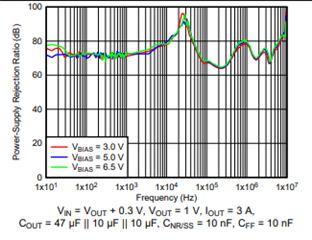Hi team,
My customer is considering TPS7A54 to generate 2.3V/15A from 2.5V rail by current sharing configuration.
The available rail is limited, so I think they will go without BIAS.
Just for reference, if BIAS is used, is clean power supply needed?
Or, the noise at the BIAS pin doesn't affect the noise performance?
Regards,
Itoh


